 Clans (Gaelic clann, children) provided the social fabric of the Scottish Highlands from medieval times until 1746. Central to this system, the roots of which lie in the Celtic tribes that confronted Julius Caesar, was that the clan chief held land, duthcas, on behalf of his people. He was responsible for their security, wellbeing and the administration of justice. The clansmen (anyone living on the duthcas) in turn owed unswerving loyalty to the chief. Clansmen felt no allegiance to the king of Scots or his lowland adherents, sasannach.
Clans (Gaelic clann, children) provided the social fabric of the Scottish Highlands from medieval times until 1746. Central to this system, the roots of which lie in the Celtic tribes that confronted Julius Caesar, was that the clan chief held land, duthcas, on behalf of his people. He was responsible for their security, wellbeing and the administration of justice. The clansmen (anyone living on the duthcas) in turn owed unswerving loyalty to the chief. Clansmen felt no allegiance to the king of Scots or his lowland adherents, sasannach.The last Gaelic speaking king of Scotland died in 1513. Thereafter Gaelic became marginalised and the Highland clans developed separately from Lowland Scotland which housed the ruling elite. Apart from a different social structure and a different language, the Highland clans had a different dress (kilt), different music (bagpipes) and a different morality (the clan chief had an absolute duty to ensure the clan had food; if that meant stealing cattle then so be it). Clansmen raided regularly into Lowland Scotland and the Jacobite uprisings of the 18th century all had their roots in the Highlands. As with any minority aggressively asserting its own culture and threatening the status quo, the clans were resented, feared, despised. It was only in the 19th century under the influence of Queen Victoria's 'Balmorality' that Highland culture became not just accepted but highly fashionable.
In my recent post on the last Cunningham Chief I referred to the 'Cunningham Family'. But the tombstone states 'Chief of Clan Cunningham'. So which is it?
 When the Cunninghams arrived in Ayrshire south of Glasgow in the 12th century (along with the Bruces, the Grahams and many others), they spoke English and it's unlikely any land-owning Cunningham ever spoke Gaelic, understood about duthcas, or felt the least affinity with Gaelic culture. Their language became the rich Ayrshire Scots of Robert Burns. And the last Earl of Glencairn, who took holy orders in the Church of England, was certainly the most unlikely clan chief.
When the Cunninghams arrived in Ayrshire south of Glasgow in the 12th century (along with the Bruces, the Grahams and many others), they spoke English and it's unlikely any land-owning Cunningham ever spoke Gaelic, understood about duthcas, or felt the least affinity with Gaelic culture. Their language became the rich Ayrshire Scots of Robert Burns. And the last Earl of Glencairn, who took holy orders in the Church of England, was certainly the most unlikely clan chief.So runs the argument for the Cunninghams being a Lowland Family rather than a Highland Clan.
Sadly, since the death of the Earl of Glencairn in 1796, there has been no chief to provide guidance. There is also no Cunningham Association in the UK. There are two quarrelling Cunningham Associations in the USA; about the only thing that they agree on is that we are a clan not a family. Our American cousins actually take an active interest in preserving the Cunningham heritage; so who are we, who do nothing about it, to tell them what is right or wrong?
So 'Long Live Clan Cunningham!' and thank you Larry Augsbury, High Commissioner of the Clan Cunningham Society of America, for that fine memorial to our last clan chief!










































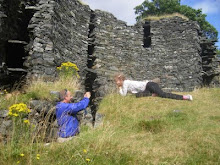
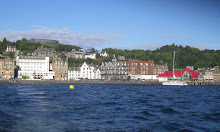
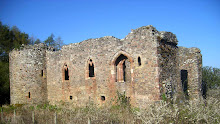
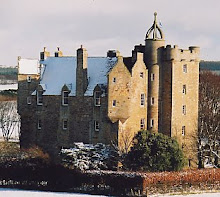
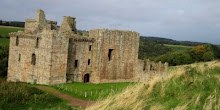

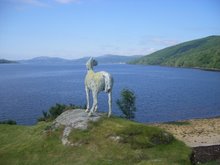

5 comments:
From an email tip, I discovered this most excellent essay which helps explain the name that a society adopted which was established in London around 2003 by Ben Cunningham calling itself The Society of the Earls of Glencairn of Cunningham. I do not know whether they remain a going concern.
Based on this essay I would concede that the lowland Cunninghams might more accurately be called The House of Cunningham. But our society adopted our name based on the advice received in a letter dated 18th October, 1984 from:
J.I.D. Pottinger, M.V.O., Islay Herald
Lyon Clerk and Keeper of the Records
on the letterhead of The Court of the Lord Lyon.
Within the two pages of advice sought by our convenor Deborah Cunningham Green on the proper formation of a legitimate Cunningham society in keeping with the highest Scottish council available was included the following advice:
"Clan Cunningham is an ancient and honourable Clan, and has for centuries been recoginised as such."
"The Earls of Glencairn, whose surname was Cunningham, were successfully Chiefs of the Clan for many centuries,..."
"I would suggest that you call the Society "Clan Cunningham Society of America"..."
"...and endeavour to conduct the Society's affairs in a way he(our chief) would have approved."
In the process of restoring the dignity to the resting place of the last Earl of Glencairn, every detail was meticulously researched with permission sought and granted on every aspect of the monument and dedication ceremony.
The original inscription on the tombstone was taken from the book "Peerage of Scotland" published in 1813. I proposed to, and sought the prior approval of, the Lord Lyon King of Arms, Robin Blair, LVO, WS, for almost the exact same wording with only the addition of the name "Cunningham" and title "Chief of Clan Cunningham."
In a letter to me from Lord Lyon, Robin Blair, dated 23 April 2003, Lyon wrote, "I am happy to give approval to the wording which you propose to show on the memorial in St. Cuthbert's Churchyard including the words "Cunningham" and "Chief of Clan Cunningham"."
I realise this is not an answer to the questions posed by this essay. But I hope that it does shed light on the origins of our society, its name, the inscription on John Cunningham, Earl of Glencairn, and our last Clan Cunningham Chief's memorial, and the diligence with which we have endeavoured to conduct the Clan Cunningham Society of America's affairs in a way in which our Clan Chief, the Lord Lyon King of Arms, and Scotland itself would approved.
And lastly, our sincere thanks for the acknowledgement of our Memorial to John Cunningham at plot #406 located against the northwest wall bordering St. Cuthbert’s Churchyard along King’s Stables Road below Edinburgh Castle.
Your most devoted and humble sasannach descendant,
Larry Augsbury, High Commissioner
Clan Cunningham Society of America
Larry,
Thanks for this. I knew that you would have left no unturned in ensuring that you had the inscription on the tombstone 100% right. I noticed that 'Right Reverend' was included and due to the uncertainty on the numbering of the Earls, no number was given. Everything was of course endorsed by the Lord Lyon who made a speech at the dedication ceremony. I would be interested in a contact for Ben Cunningham if you have one.
Ahh, the topic of the numbering of the Earls of Glencairn is a fascinating one!
Based on my limited knowledge of the nuances and motives involved, in a nutshell, my understanding is:
In the middle of the 15th century Clan Cunningham acquired its first recognised chief with the granting of honors to Sir Alexander Cunningham as Lord Kilmaurs by Scottish King James II, (who according to this original post may well have spoken Gaelic!) who created Sir Alexander a lord of parliament by the title of Lord Cuninghame of Kilmaurs who sat in Parliament from 1464-1488, and who continued the centuries old tradition of loyalty to the Scottish monarch and the bravery of a master-at-arms.
By 1488 King James III was on the Scottish throne, and on Feb. 14 of that year his teenage son was seized by and joined a great many Scottish nobles who rebelled against James III. Sir Alexander Cuninghame, Lord Kilmaurs, of the king's privy-council, remained loyal to James III and brought forces to defend against the rebellious nobles at the Battle of Blackness. For his loyalty, Lord Kilmaurs was advanced to the dignified title of Earl of Glencairn by royal charter on May 28, 1488. Thirteen days later on June 11, 1488, at the Battle of Sauchieburn both Glencairn and James III died from this battle.
The teenage King James IV by proclamation annulled the new dignities since 2 Feb, 1487 granted by his father which was ratified by Parliament in Oct 1488 as the "Act Recissory." This stripped the recent nobles loyal to their king of their dignities, further empowering the disloyal ones. (An ignoble bit of Scottish history from a sasannach's viewpoint!) Being on the winning side, the Montgomery's burned down their rival Cunningham's stronghold, Kerelaw Castle.
The Cunninghams nevertheless persevered, and a matured thirty-year-old King James IV, at his wedding to Margaret Tudor in August 1503, re-bestowed upon the grandson of the 1st Earl of Glencairn, his loyal warrior Cuthbert, the Earldom of Glencairn, who was also a member of King James IV's privy-council.
And thus King James IV, by restoring the Earldom he had stripped from Cuthbert's father, rectified the error of his youth and the obvious influence of the perfidious nobles. James Hamilton, the Earl of Arran, William Grahame, and the Earl of Montrose also took the oath that day and were girdled with the sword by King James IV on that royal wedding occasion.
Over the next few years, most of the land that had been lost by the Cunninghams was restored so that the wealth and power of the Cunninghams reached its peak. And in 1528 the Cunninghams returned the favor to the Montgomery's by burning their Eglinton castle to the ground.
History may be written by the victors, but may well be interpreted differently by those with a true and loyal heart.
And thus the Clan Cunningham Society of America chooses to interpret the actions of King James IV as his rectification of a wrong done by the Act Recissory, and so we recognise Sir Alexander's son Robert as the 2nd Earl of Glencairn, and Cuthbert (whose arms in stained glass adorn Stirling Castle)as the 3rd Earl etc..., as do many historians and authors.
Therefore, out of the utmost respect for the history of Scotland, and the Lord Lyon King of Arms, we did not request that a number precede the title of John Cunningham on his memorial.
Larry Augsbury, High Commissioner
Clan Cunningham Society of America
That was very interesting and informative. One day I hope to delve more into the Forsythe and Culbertson surnames and discover more about the highlander and lowlander connections.
Tina
Alastair,
First it was great to meet this summer at The Gathering, when I recover financial and my wife is ready hear about a return visit to Scotland we will be sure to get in touch with you.
Secondly, what a wonderful Bolg, I enjoyed both the articles and the lovely photos.
Third, I wanted to update you and your readers; there is now an active chapter of Clan Cunningham International representing Scotland and the UK, Alex Cunningham of Hawick is the Scottish Regional Director. This past fall Alex hosted the first Clan Cunningham Tent at local Highland Games.
While true there is discord here in America between Clan Cunningham International and CCSA, I applaud and admire the hard work the founders and early members of CCSA accomplished. You and your readers should know that we with Clan Cunningham International would welcome the opportunity to work out our differences with our kinsman within CCSA and will look for every opportunity to do so.
I hope as a New Year, 2010 and decade dawns that we Cunningham’s here in America will sit down together and work out our differences.
Again, Alastair I love your Blog and will look forwarded to your postings and new photographs.
Merry Christmas and a Happy New Year to you and your family
Yours
C. Stevens Cunningham
Vice President
Clan Cunningham International
Post a Comment